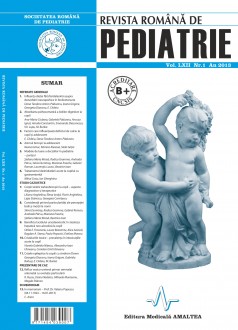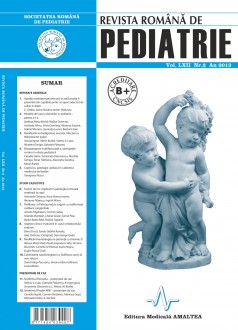SELECT ISSUE

Indexed

| |

|
|
|
| |
|
|
|

|
|
|
|
|
|
|
HIGHLIGHTS
National Awards “Science and Research”
NEW! RJP has announced the annually National Award for "Science and Research" for the best scientific articles published throughout the year in the official journal.
Read the Recommendations for the Conduct, Reporting, Editing, and Publication of Scholarly work in Medical Journals.
The published medical research literature is a global public good. Medical journal editors have a social responsibility to promote global health by publishing, whenever possible, research that furthers health worldwide.
Epileptic seizures in children with Down syndrome
Georgeta Diaconu, Ioana Grigore, Gabriela Buhusi, E. Cîrdeiu and M. Burlea
ABSTRACT
Epileptic seizures are one of the most common neurological disturbance in children with Down syndrome. The aim of this study was to evaluate the nature and evolution of epileptic seizures in pediatric patients with Down syndrome. The study group contained 23 children with Down syndrome who were diagnosed with different types of seizures (11 cases with epileptic spasms, 5 cases with generalized tonic-clonic seizures, 7 cases with complex focal seizures). Age of onset of critical episodes ranged from 1 month to 8 years. The study protocol included general and neurological clinical examination, psychological evaluation, electroencephalogram, neuroimaging and blood biochemical explorations. Neuro-radiology examinations revealed agenesis of the corpus callosum (3 cases), cerebral atrophy (6 cases), arachnoid cyst and choroid plexus cyst (1 case), polymicrogyria (2 cases) and were normal in 11 cases. Response to antiepileptic medication was different compared to seizures semiology. The prognosis of epileptic seizures in patients with Down syndrome depend of age of onset and type of seizures and of neuropathological changes in the brain, prognosis being reserved at children with the onset of the seizures in the first year of life.
Key words: child, Down syndrome, epileptic seizures

